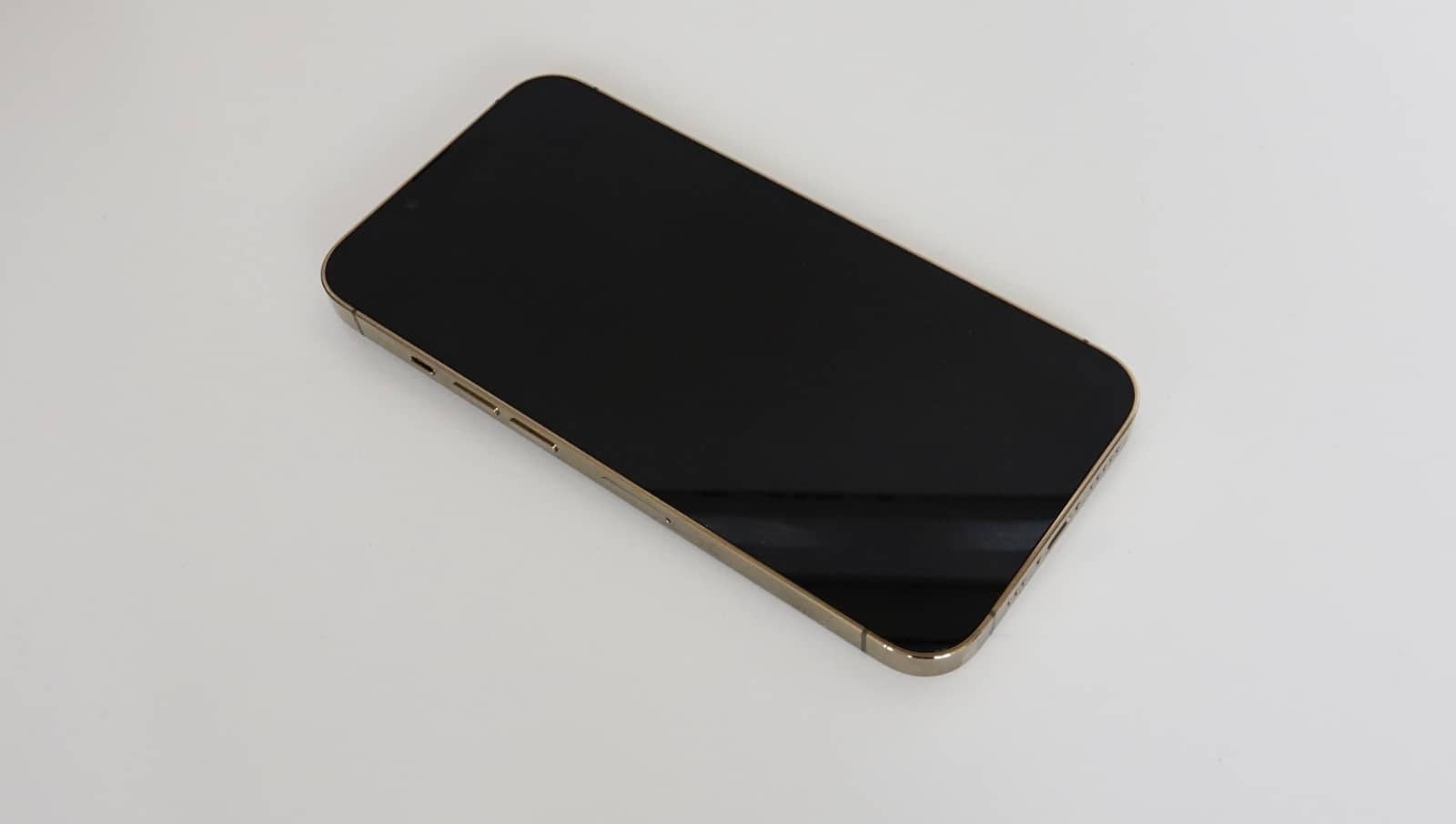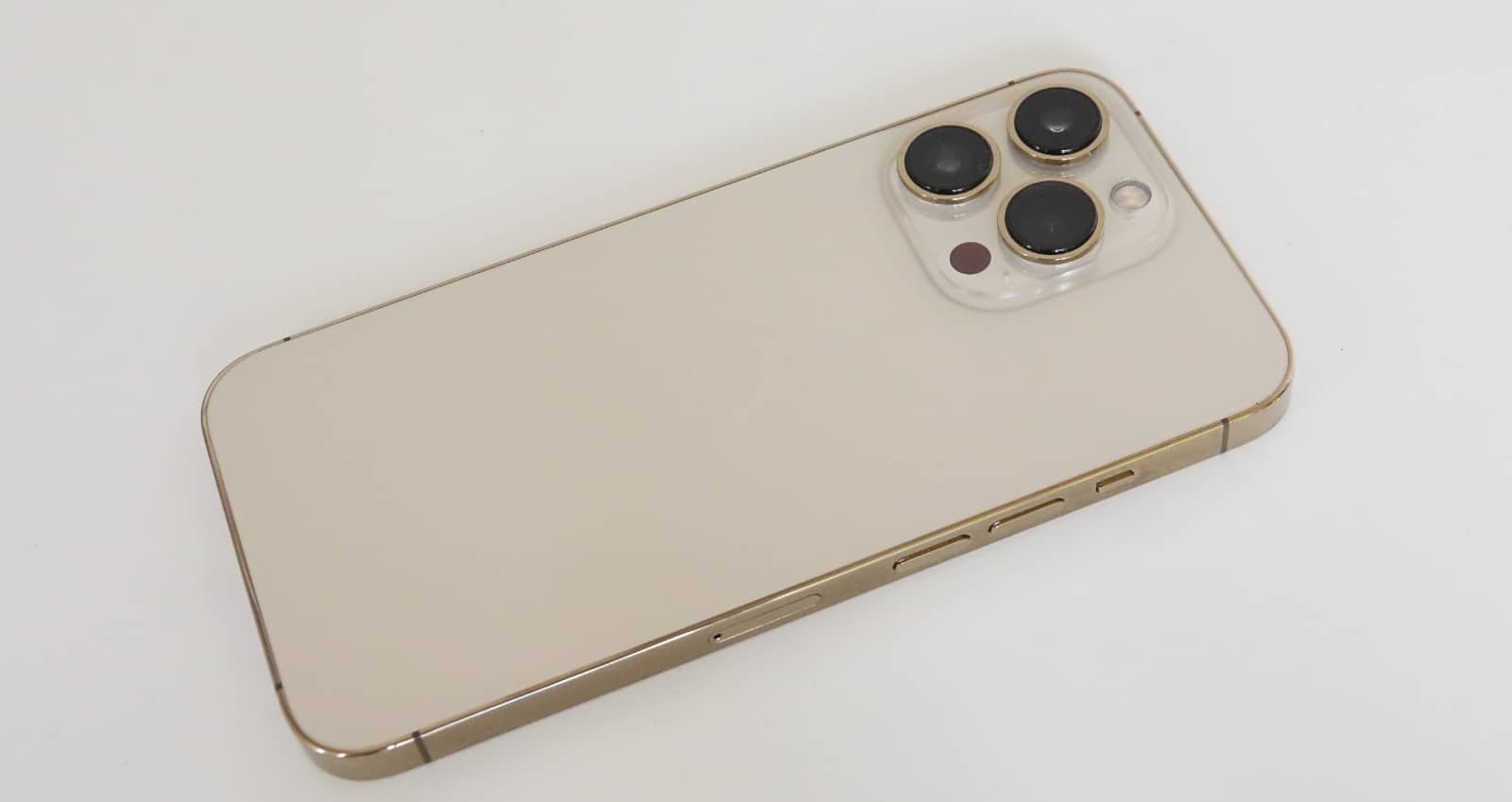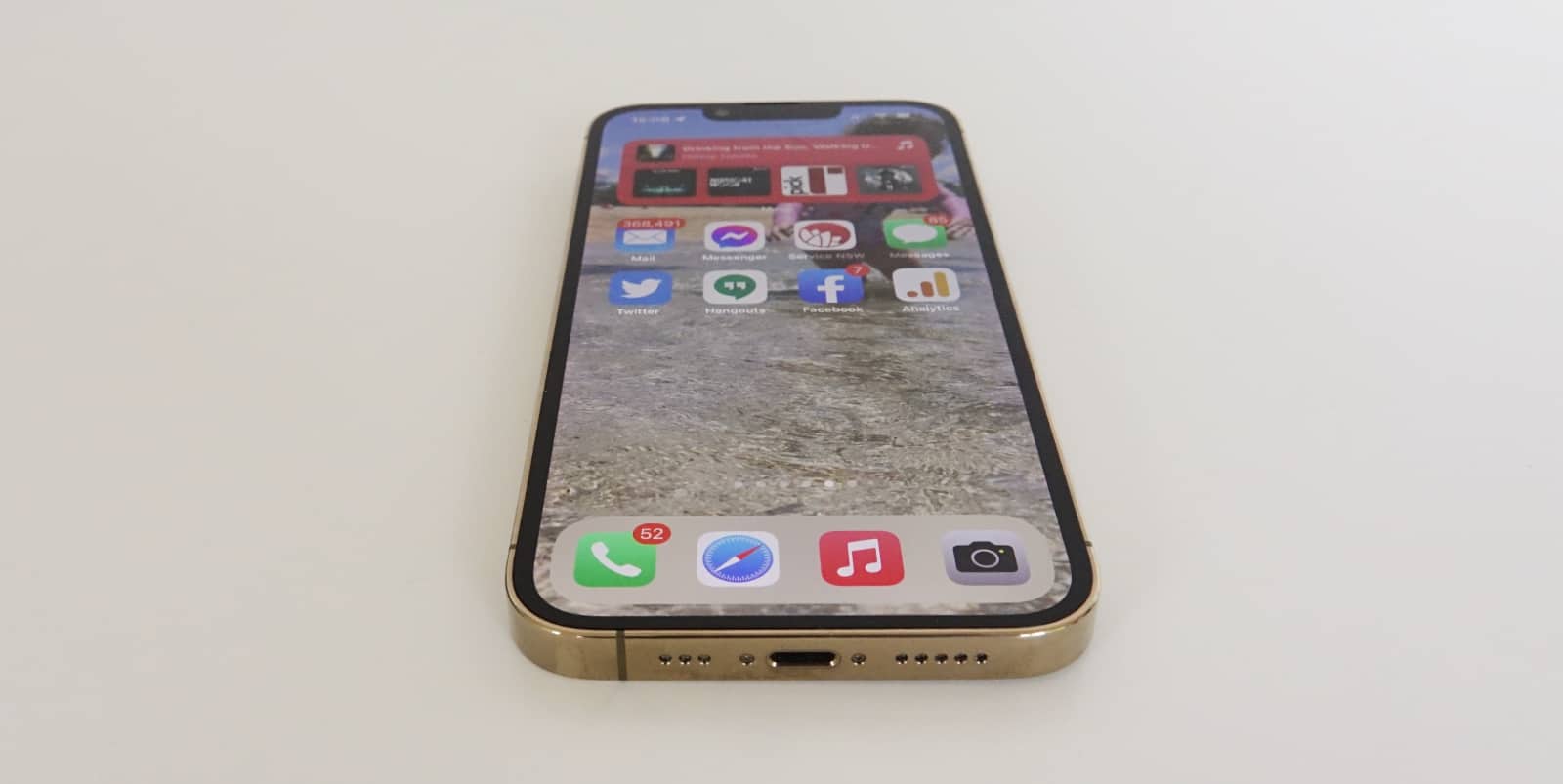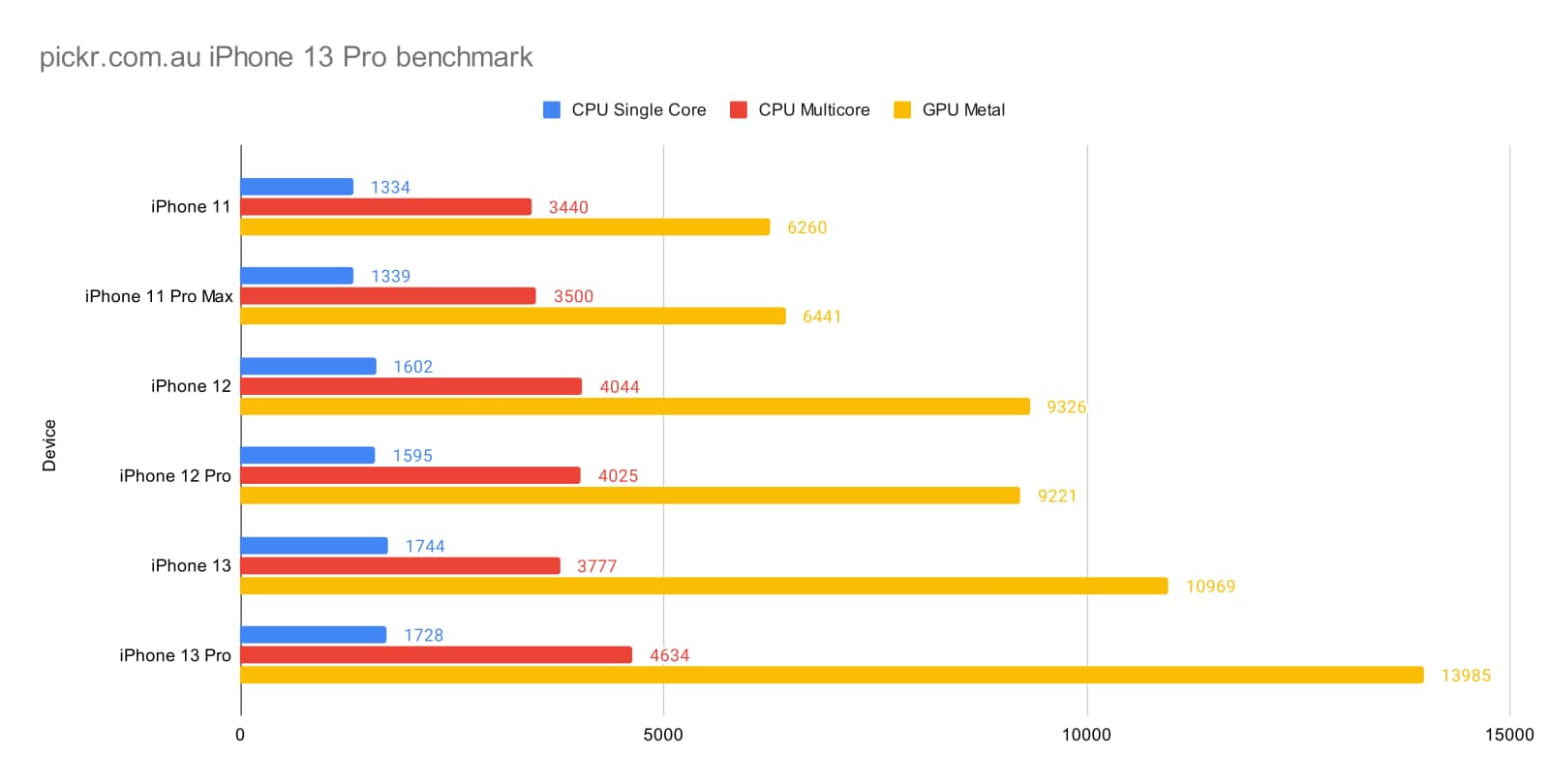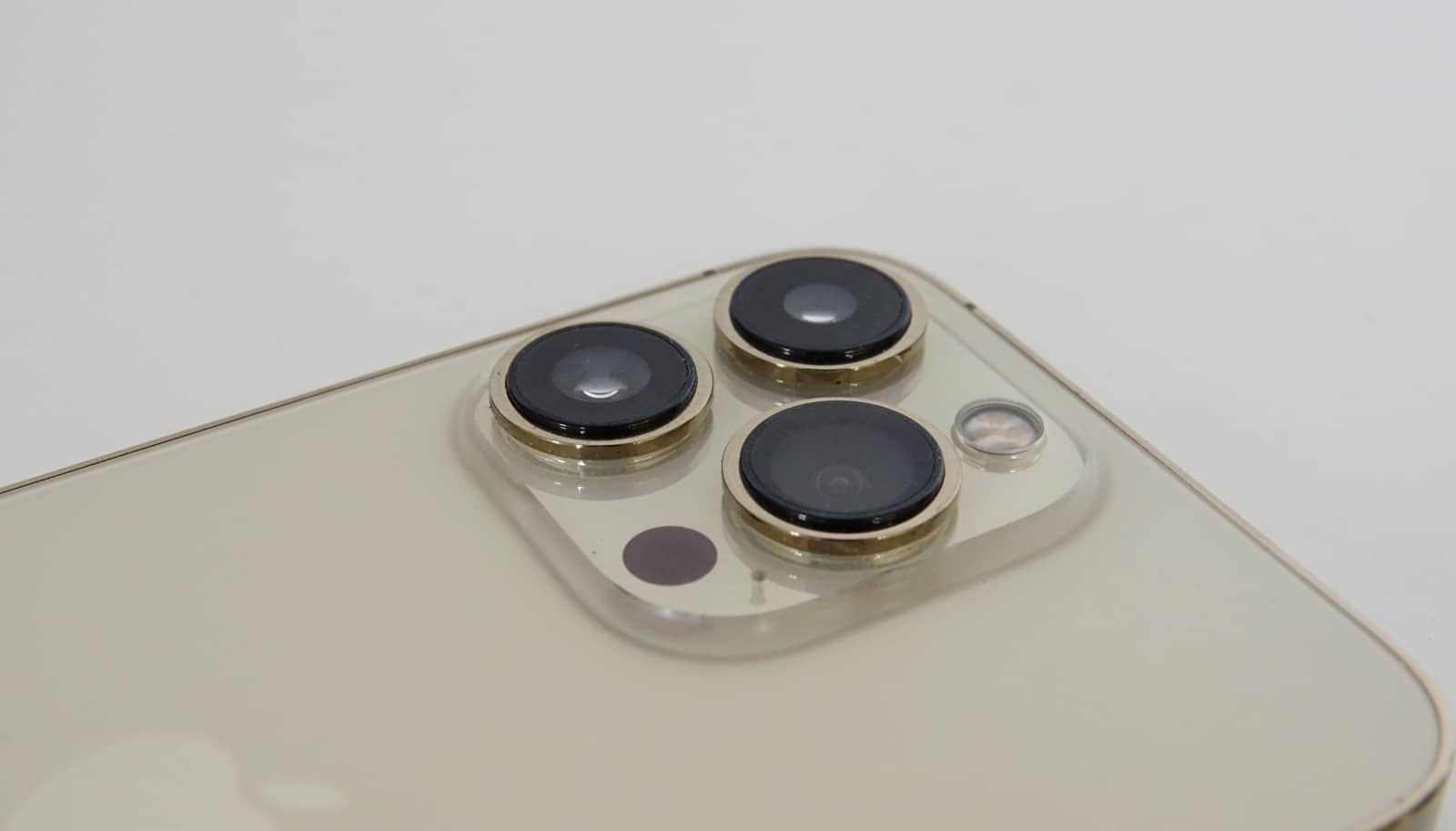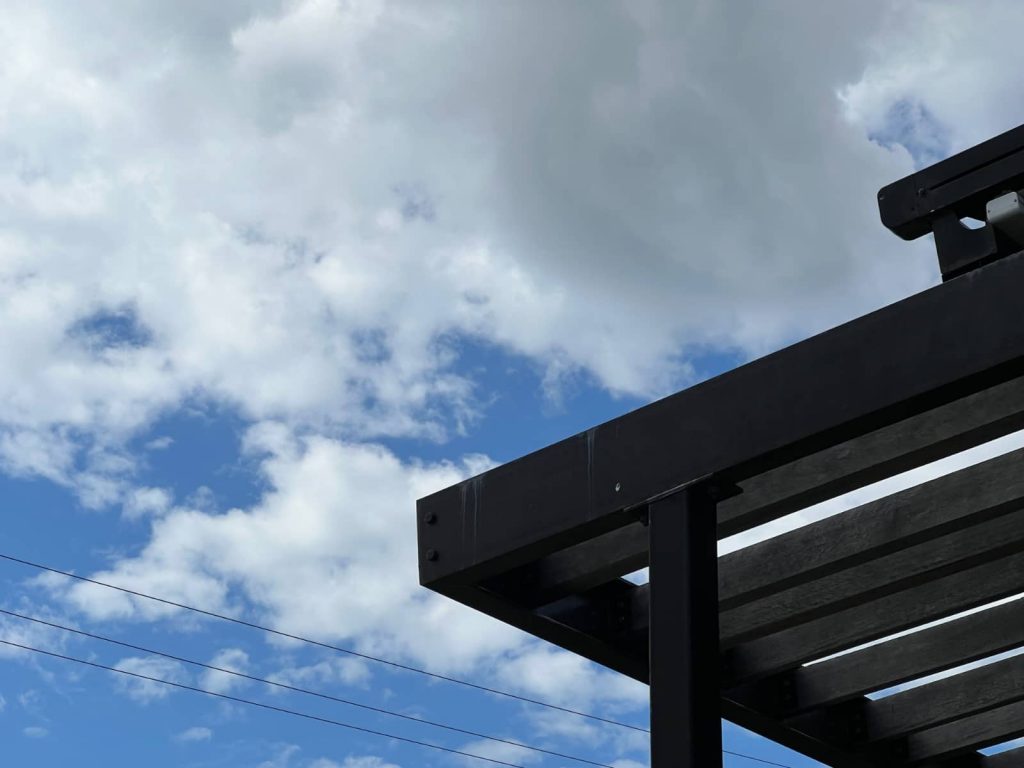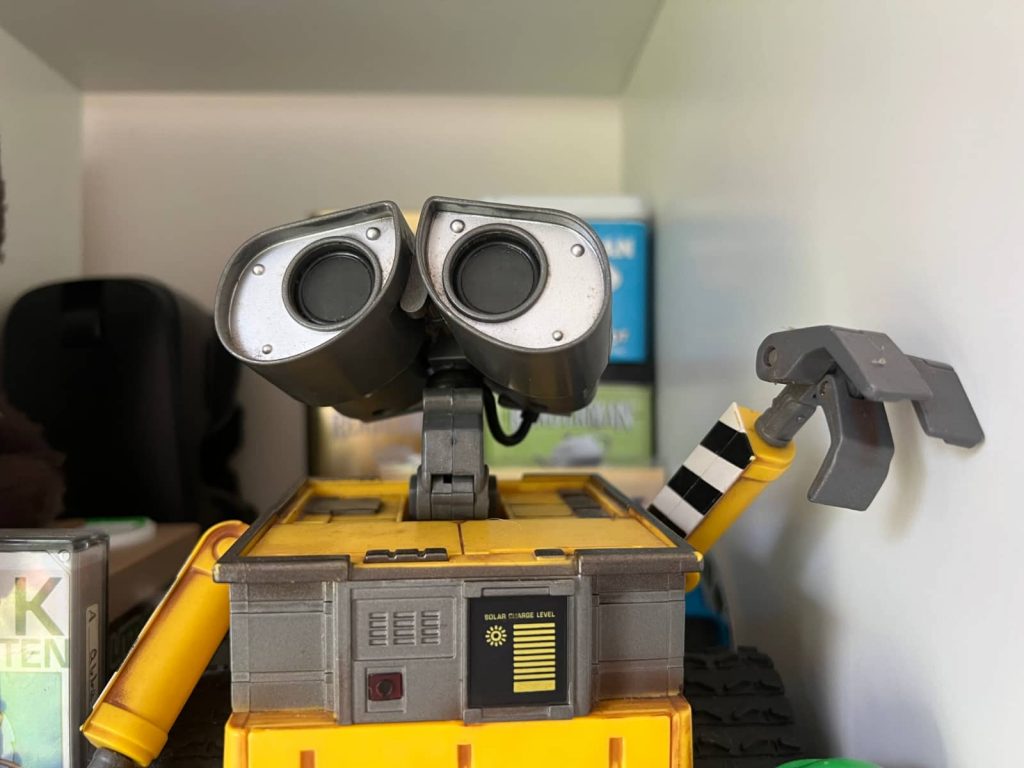Quick review
The good
The not-so-good
The iPhone 13 is out, but it’s not alone, arriving alongside a more premium iPhone 13 Pro. We loved one model, will we love the other even more?
If you’re in the market for an iPhone, buying one can be a little difficult. This year and for the second year in a row, there are four new models to choose from, ranging from small to normal to one of those big, big phones, as well. Each is slightly different, but they all have something similar, with much of the technology now the same across the board.
Regardless of whether you end up on the iPhone 13 and 13 Mini, or the iPhone 13 Pro and Pro Max, you’re getting at least two cameras, an OLED screen, a new chip, and some snazzy new smarts, as Apple approaches its iPhone 13 range not with a new design, but rather a look at what’s on the inside. Because as we all know, it’s what on the inside that counts.
In the iPhone 13 Pro, that approach is clear, as Apple takes a good hard look at what worked in the iPhone 12 Pro and improves nearly everything in a way that not only makes it a phone worth checking out, but also one that may well be the easiest to recommend.
Design
Sitting in the fifteenth generation of the iPhone, the iPhone 13 Pro is the more premium take on the iPhone 13, taking one of the spots on the four device range of the iPhone.
Borrowing last year’s template of the iPhone 12 Pro, Apple has increased the size of the camera bump, decreased the size of the front-facing screen notch and shelf, and yet largely left everything the same.
Much like last year, there’s a stainless steel band surrounding the all-glass design, with a textured matt glass back and a front-facing piece of glass made with Apple’s Ceramic Shield, touting a little more drop resistance than models before the iPhone 12 had.
The look is sleek and the aesthetic attractive, and while it’s not a fundamental leap in design from the iPhone 12 Pro, we loved it back then and still love it now. The iPhone 13 Pro is a sexy, sexy machine.
Features
Under the hood of that sexy machine is a plethora of parts, more or less proving the “pro” moniker properly, is a new chip, one of the major aspects of Apple’s new line.
Here in the iPhone 13 models, you’ll find the Apple A15 Bionic, a new system featuring a 16-core Neural Engine, a six-core CPU, and a slightly different graphic chip compared to what’s in the iPhone 13 and 13 Mini. In the standard 13 models, you’ll find a four-core GPU, while the Pro and Pro Max get the five-core, giving those who spend a little more something marginally better.
Storage on the phone is set to a wide assortment of choices, starting at 128GB, but also offering 256GB, 512GB, and 1TB, if you can afford it, with the iPhone 13 Pro arriving out of the box with iOS 15.
Connections on the phone are pretty much the same as they were in last year’s iPhone 12 Pro, sporting 802.11a/b/g/n/ac/ax WiFi (WiFi 6), Bluetooth 5, NFC for Apple Pay, GPS, and 5G, and that dash of ultra-wideband (UWB) is also here, as well, useful if you’re trying find an Apple AirTag.
The cameras are where the fun may well be, as Apple boosts the camera bump with more lens love.
You’ll find three 12 megapixel cameras at the back of the iPhone 13 Pro, including a wide F1.5 camera designed to respond like a 26mm lens and featuring sensor-shifts optical image stabilisation, an ultra-wide F1.8 designed to work like a 13mm lens, and a close 3X telephoto F2.8 designed to respond like a 77mm lens and camera. Those three cameras are paired with some of the smarts Apple has become known for, including portrait mode, Deep Fusion image processing, the True Tone flash, and a user of LiDAR to get portraits working in low-light scenarios like at night.
New to the setup this year is a macro mode, which sees the camera jump into the ultra-wide and use improved focus to lock onto details up close, giving you that little bit more control. It’s a feature that works in both photo and video, with video on the iPhone 13 Pro supporting both Full HD 1080p and 4K, with HDR Dolby Vision supported up to 4K, as well. Filmmakers looking for their next big thing may find it in Apple’s Cinematic Mode, which not only provides a way to keep a face locked and in-focus in videos, but also allows you to edit which face is locked after you’ve captured it. This feature joins Apple ProRes recording on the iPhone 13 Pro, providing just that little bit more for the phone to do with its camera.
On the front, the 12 megapixel TrueDepth camera is still there, offering F2.2 and support for the cinematic video mode, as well as ProRes, making it very similar to what’s on the back, yet also on the front.
The front-facing camera can be found above a marginally bigger OLED screen, still 6.1 inches and offering 2532×1170, but now with a shorter notch and shelf, and capable of running at faster frame rates, supporting Apple’s ProMotion 120Hz technology.
It all sits in a phone weighs 203 grams and is IP68 water resistant, arriving with one Lightning port at the bottom, and support for wireless charging both in Qi and MagSafe.
In-use
Switch the phone on and you’ll get an iPhone experience more or less just like any other out there.
With iOS now in version 15, there’s home screens with widgets you can throw on them, a dedicated app menu for every shortcut you don’t want on the main screen, and a left-most screen just for widgets. You get a drop down notification bar swiping down from the top-left, a power control bar swiping down from the top-right, while going back to the home screen is a simple swipe up from the bottom. It’s all about as easy as it gets.
Apple also keeps its TrueDepth camera as part of the Face ID technology, so unlocking your iPhone happens by way of scanning your face or typing in your PIN. None of this is particularly new, and the iPhone 13 Pro is as responsive as last year’s model, so nothing new has really been brought in here.
Screen
While using the iPhone is more or less the same as it ever has been, the screen has been changed slightly in this generation. You’re still getting a high-end OLED display, and one with a smaller notch at that, but Apple has added support for its “ProMotion” technology, which is a fancy way of saying there’s a fast 120Hz screen, but it goes beyond this.
For those playing along at home, mobile phone screens typically run at 60Hz, as do most screens for your computer. That number tells you how many times the screen refreshes itself per second — so 60Hz is 60 times per second. Increase the refresh rate and what happens on screen can look smoother — move to 90 times per second (90Hz) or 120 times (120Hz) and animations look slicker and clearer, similar to how motion technologies in TVs make the high-speed camera movements in sports seem clearer and easier on the eyes.
In the world of phones, a faster screen is the difference between a slick animation for scrolling, and also better looking visuals and games.
It’s a development that has been around in Android for some time, and was rolled out on the big flagship phones some years ago, but has been trickling to the mid-range recently. As it is now, you can typically find 90Hz screens near the $500 mark in Australia.
Apple’s approach to fast screens is a little different, and sees a 120Hz screen roll out to the iPhone 13 Pro, but one that isn’t forced to run specifically at 120Hz. Keeping a phone locked to these fast screen refresh times can affect battery life dramatically, so Apple’s ProMotion tech can jump between 10Hz and 120Hz, meaning your phone isn’t locked to the fast screen refresh tech with the worst battery impact. Rather, it alternates based on what you’re doing, running at a low speed if you’re not doing much and a high-speed if you are.
The result is something kind of hard to explain, but ultimately one that looks clearer. Flicking your finger down the display in a scroll looks somehow nicer, while games seem like they’re on a whole new level.
We’re used to 120Hz technology on the whole, but Apple’s approach in ProMotion feels better.
Performance
The performance also manages to feel better, as well, thanks to that A15 Bionic chip, and it’s even a smidge better than what you get on the iPhone 13.
This year, the chips are a little different between the models, with the iPhone 13 Pro getting the marginally more impressive guts, getting one extra graphical core, which means marginally better performance in games.
It’s a minor change and one you’re not likely to notice — we sure didn’t — but it does show up in the benchmarks, with more graphical prowess in the charts, which in theory means a little more future proofing for the big games that’ll eventually roll out.
You won’t notice it yet, but if you’re getting the pro model, it’s nice to know that you’re also getting marginally better performance than the standard iPhone 13.
There’s also support for 5G, which in our tests on Telstra in Sydney found speeds as high as 980Mbps, making for a super fast 5G experience. Granted, this will depend on your telco and the reach of the 5G networks, but it confirms the iPhone 13 Pro can hit some impressively fast download speeds as offered by Sub-6 5G.
But 5G was yesterday’s big feature, and given it can now be found in two generations of iPhones, not to mention scores of Androids across flagship, mid-range, and even budget, the main feature we’re looking forward to in the iPhone 13 Pro is the camera.
Camera
Bigger this year than last year, the 2021 Pro-level iPhone keeps the three cameras from last year, but resizes the bump, which is now even bigger. Because of this, the iPhone 13 Pro is actually a different size than the iPhone 13 it shares a namesake with, and won’t fit in an iPhone 13 case at all.
There are pretty good reasons why, however: the cameras are bigger than ever.
The main camera sits at the bottom, and is a standard wide F1.5 camera set to 12 megapixels supporting the sensor-shift optical image stabilisation technology that was only on the 12 Pro Max last year, but can be found throughout the iPhone 13 range this year.
Next on the right is the ultra-wide camera, another 12 megapixel camera sporting a newer and faster sensor and an F1.8 aperture. Both of these apertures allow in quite a bit of light, which means more light for your pictures in low light.
At the top, is the telephoto, and that’s jumped up in zoom from the 12 Pro to the 13 Pro, moving from 2X last year to 3X with an aperture set to F2.8, not as bright as the F1.x apertures of the others, but not too shabby overall.
The combination is a slight improvement on what we saw last year, while a few new tricks have been thrown in for good measure.
For starters, while the portrait mode is still here, you get a Cinematic Video mode that not only manages to keep a focus lock on faces during a video capture, but also edit the locked focus after you’ve captured it. The whole thing is a little like portrait mode for videos, giving you that extra bit of control for a scene, as if you had a professional focus puller on set, and the set was your life.
Extra control is also exerted through the macro mode, which may well be one of the best inclusions on the iPhone 13 Pro. It’s easily one of the more obvious differences that makes the “pro” model stand out, and delivers something few phones have actually achieved.
Also known as close-up photography, macros allows you to get a little closer to subjects to get extra fine detail a regular lens may not handle. In the world of proper cameras and lenses, a macro lens is a thing in and of itself, and usually something not that cheap, either. Here in the iPhone 13 Pro, Apple has provided a macro mode that works in images and videos, switching to the ultra-wide when it sees you’re getting too close.
Switching to an ultra-wide camera isn’t new to phones with macro mode — it’s how the technology worked back in Huawei’s P20 Pro, and we loved it there, too — but Apple’s macro manages to feel so capable, it might manage to move even the most ardent of macro photographers with a real camera to their phone, at least for a quick close-up snap, especially when viewed at a 100 percent crop (detailed below).
As a macro photographer, this reviewer easily prefers his Tamron 90mm to what the iPhone offers, and that should hardly be a surprise: a dedicated macro lens is of course going to offer better macro stills than a mode on a phone, but the iPhone does quite well, too, letting you get close enough to see the hairs on a fly’s leg or the fuzzy face of a bee holding pollen as they move from flower to flower.
There’s a whole world in the most minute details, and it’s one Apple’s macro mode is essentially giving you access to without a special lens. Anyone with an iPhone 13 Pro can experience it, and the results can be simply stunning.
Outside of the macro shots, the iPhone 13 Pro takes some real stunner shots, working well in daylight, night, for food and pretty much anything else you have. We’re sure you’re shocked, but the clarity on the phone is pretty stellar given we’re still sitting at 12 megapixels, a result that is clearly more than enough for phones when the sensor and glass have been steadily improved over the years.
In some ways, the new 3X camera can be too close, though. While we love a little more range, and it’s especially handy to capture things slightly further off, it means the portrait shots can be closer than you might want, and not necessarily as easy to crop around your subject if you were already somewhat close.
That’s a minor niggle, and joins a minor one for the macro mode, which sometimes fires incorrectly or refuses to leave the mode, and even manages to offer a weird digital zoom of 3X when you’re pushed into macro mode. Clearly, it’s one of those things Apple will work on in software, but it’s just something to be aware of right now.
You won’t get the same problem with the front-facing camera, which is also set to 12 megapixels and supports portrait mode and the video version that is Cinematic Mode, with 4K on the front and the back, and support for both Dolby Vision HDR and Apple ProRes video recording if you need a more professional look for your captures.
Much of this has been rolled over from last year, because really Apple is just improving last year’s approach to the iPhone.
Battery
And with a similar template to the iPhone 13, you probably won’t be surprised to find the iPhone 13 Pro handles much like its similarly-sized sibling.
Specifically, we found the iPhone 13 Pro could handle a full day of regular use with no problems, lasting a little longer at around 28 hours, achieving that with around 4 hours of screen time through the day period. It’s note quite as high as what we experienced on the standard iPhone 13, something we’re attributing to the faster screen which makes a similar dent on battery life in the world of Android, as well.
We suspect most iPhone 13 Pro owners will probably end up charging their phones nightly, and that’s something suited to this phone, which isn’t going to go so far as to hit two days, but handles the full 24 hours and a little bit more if you forget to stick it on the charge or you’re out for longer than expected.
While the battery life isn’t mind-blowing, flagship 5G phones on the whole are lacking in this department, with mediocre performance from phones of equal size over in the Android camp.
As it is, the only phones really excelling in 5G battery life are the mid-range models, and so while a full day of life on the iPhone 13 Pro doesn’t seem like a big win, it’s actually bigger than it probably should be.
Value
One area you may struggle to come to grips with is the price, which isn’t so much a huge leap from where it was in last year’s iPhone 12 Pro, but is still quite expensive.
Priced from $1699 in Australia, the iPhone 13 Pro is not what we’d call cheap, but still somehow achieves value. The updates are notable from the iPhone 13, which wasn’t bad for value, either, but means you’re getting a better camera experience, more in the display, and a slightly more premium design and finish for a little bit more, too.
As far as the “value” argument goes, that’s not a bad effort, even if the result is still quite expensive. Flagship phones tend to be lately, anyway.
What needs work?
With the solid template that is the iPhone 13 to work from, the iPhone 13 Pro feels like the tightened phone we wanted the “Pro” model to be. You get a slightly better experience in just about everything.
There’s a better screen, better camera, better battery life, and better feeling that you’re not seeing the bigger model — the iPhone 13 Pro Max — get something better simply because you wanted a smaller phone, something last year’s 12 Pro suffered from with the lack of sensor-shift technology in low-light.

But what you don’t get is a wallet-friendly price.
Sitting at $1699 and fetching easily into the $2K mark based on how much storage you want to throw its way, the iPhone 13 Pro is not cheap, not by a long shot.
Sure, it’s not as expensive as the innovative foldable technologies making their way out, but it’s also not inexpensive, because let’s be honest, while 128GB is a great starting place for a high-end phone, a model costing this much should include 256GB, as it would really round out that price considerably.
Final thoughts (TLDR)
The year of phones in 2021 has been a little underwhelming, much like the rest of the year. I think we all know why this year hasn’t been great, and while it also had a pandemic from last year to kick it off, neither year — 2020 nor 2021 — have been remarkably brilliant for everyone.
Phone makers have felt stuck in the same boat, as well. There have been great options in the mid-range and some curious options in the high-end, but nothing has really, truly stood out.
We liked what Samsung was trying with its foldables this year, appreciated the cute little camera gimmick in Oppo’s Find X3 Pro, and are intrigued by what Google is working on with its yet-revealed Pixel 6 phone with a TensorFlow chip, but so far, little has been breathtaking.
Apple’s doesn’t necessarily qualify, either, but what it has done with the iPhone 13 Pro is deliver a phone that really stands out. Truth be told, it stands out in all the right ways.
While more mobile makers are looking for ways to stand out, the iPhone 13 Pro stands out by attempting to perfect what it had before, and adding minor improvements that might make a dent in your life. Will you necessarily get better shots with macro mode? Probably not, but it will expand what you can do if you decide to get creative. Will the slicker 120Hz ProMotion screen deliver an ultimately better mobile experience? Not really, but it may make you appreciate your phone more, and once you see it, it’s also hard to un-see it.
With the iPhone 13 Pro, Apple has taken the template of a great phone from last year, and much like it would in an “S” year, applied all the tweaks and changes to make it better than ever, all without changing the design. It’s the iPhone you loved last year made even better this year. Highly recommended.





